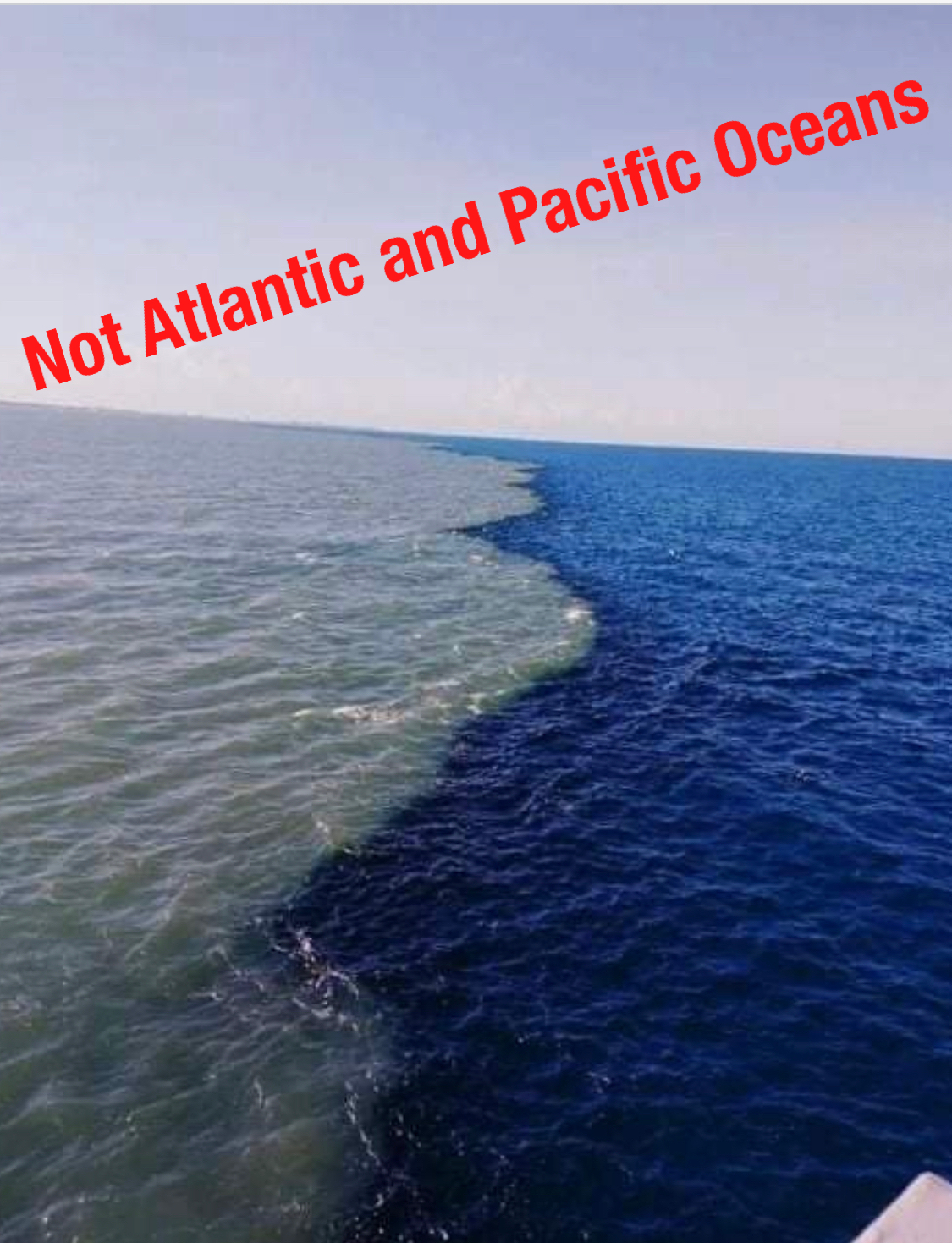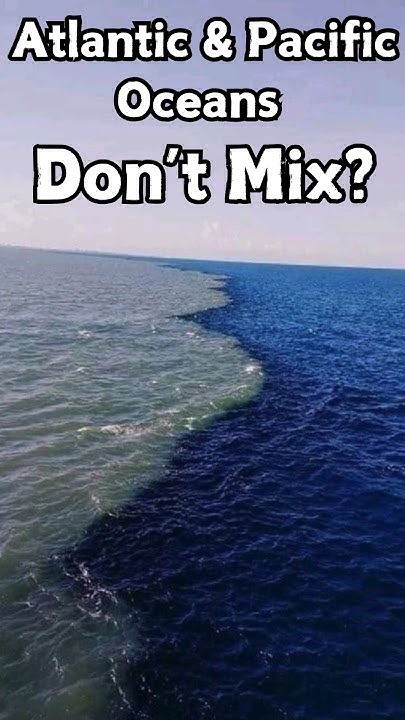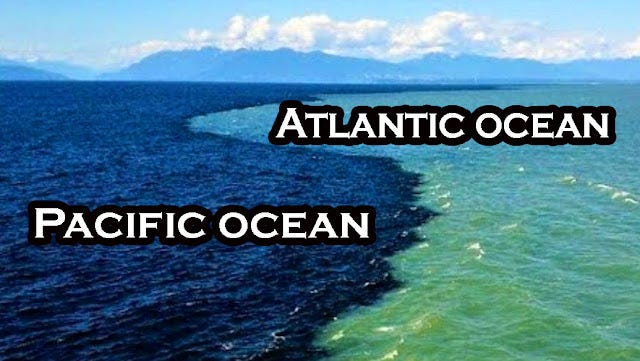Why Do Atlantic Ocean And Pacific Ocean Never Mix

Have you ever seen those pictures online, the ones that show a distinct line separating the Atlantic Ocean and the Pacific Ocean? It's like a giant aquatic border dispute, and it makes you wonder: what's the deal? Do they just... hate each other?
Well, hold your seahorses! The reality is a bit more nuanced than a simple ocean feud. Imagine it like this: two friends, both holding different flavors of slushies. One's got cherry, the other's got blue raspberry.
If they try to pour them together, you wouldn't get a perfectly blended purple concoction, would you? You'd likely see swirls and maybe even distinct layers. The oceans are kind of like that, only way, way bigger.
It's All About the Properties
So, what keeps these watery giants so stubbornly separate? The secret ingredients are a few key differences in their properties.
Salinity: A Salty Showdown
First up: salinity, or how salty the water is. Think of it like adding sugar to your iced tea. Some areas of the ocean are saltier than others.
The Atlantic tends to be saltier than the Pacific. This is partly because of higher evaporation rates and freshwater input differences. Saltier water is denser, meaning it tends to sink. Imagine trying to mix oil and water – similar principle!
Density: The Heavyweight Champion
And that brings us to density! Salinity isn't the only factor here. Temperature also plays a big role. Cold water is denser than warm water.
So, if one ocean is colder or saltier, it's going to be denser, and therefore less likely to mix easily with a less dense neighbor. It's like trying to get a bouncy ball to stay underwater – it just wants to pop back up!
Temperature: A Chilling Effect
Speaking of temperature, different parts of the world have different climates, shocker! The Atlantic and Pacific experience different temperature ranges, which affects their densities. This is one of the key factors that prevent the water from mixing.
Think of it like this: try mixing hot coffee with ice water. They'll eventually reach a common temperature, but you’ll notice that they will never fully mix. You see those swirling effects, right?
Surface Tension: A Watery Barrier
Don't forget surface tension! This is the skin-like effect on the surface of the water. Different densities and compositions can affect surface tension.
Imagine gently placing a paper clip on the surface of water. It floats, right? Now, add a drop of soap. The paper clip sinks. Surface tension changes based on what’s in the water.
Not a Complete Stand-Off, Though
Now, let's not get carried away thinking these oceans are completely walled off from each other. They do mix, just not readily or uniformly. Currents, like the Gulf Stream, carry water and energy around the globe.
It's more like a very slow, gradual blending in certain areas, rather than a full-on, immediate fusion. Think of it as adding a drop of food coloring to a giant swimming pool. It takes time and movement for the color to spread evenly.
So, Why the Line?
Okay, so if they *do* mix eventually, why do we see those dramatic pictures with the clear line? It’s often near places where glaciers meet the sea, or where major rivers dump freshwater into the ocean.
These visuals highlight the different properties and densities of the water masses. It’s not a permanent, uncrossable barrier, but a dynamic zone where these differences are clearly visible. The photos are often taken at a specific time and place to maximize visual impact.
So, next time you see a picture of the Atlantic and Pacific "not mixing," remember it's a bit more complicated than just disliking each other. It's a fascinating dance of salinity, density, and temperature, all playing out on a massive, global scale!


















